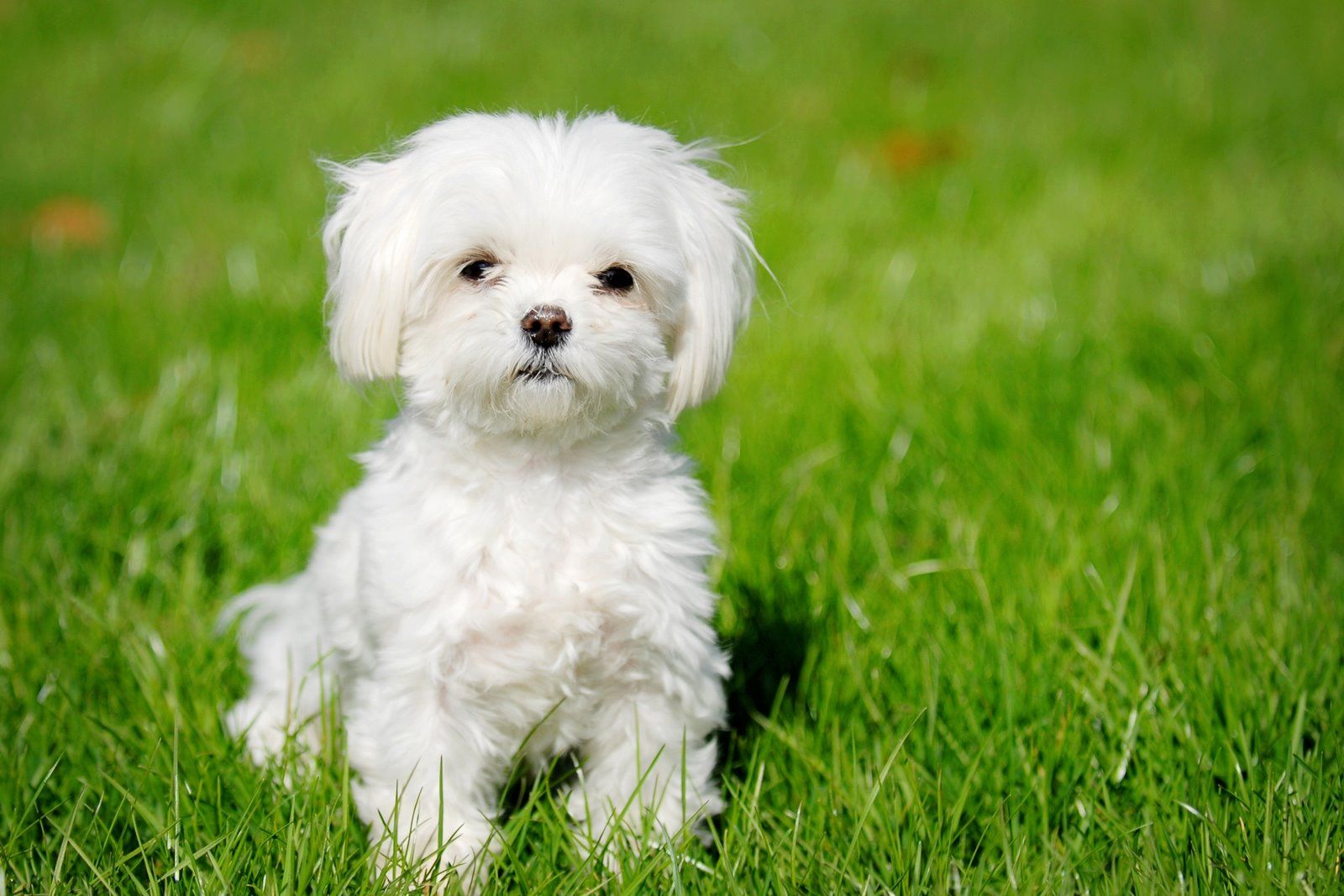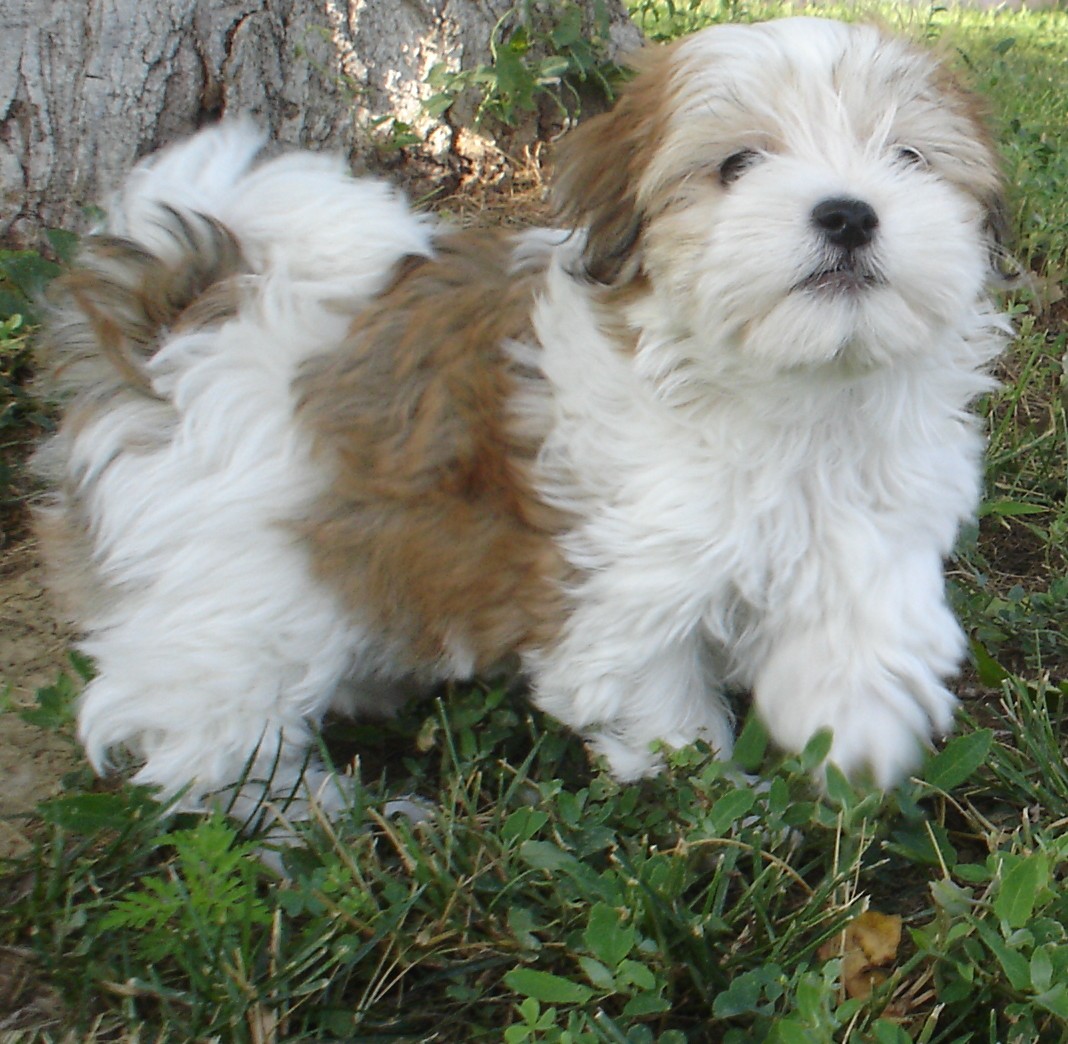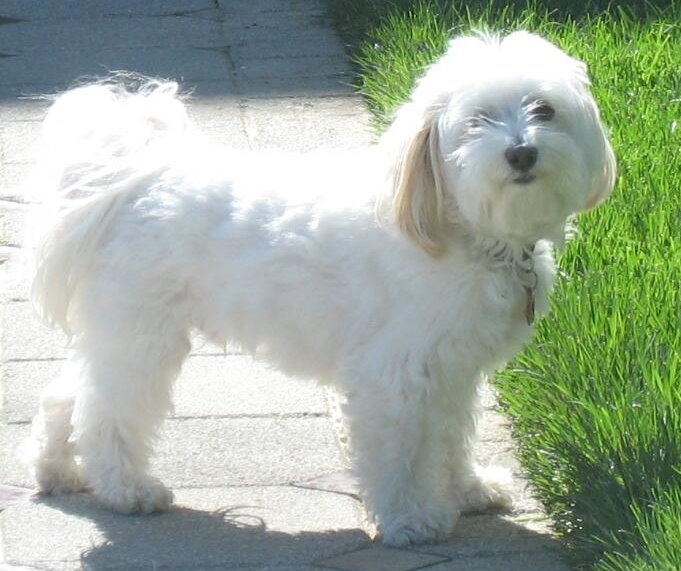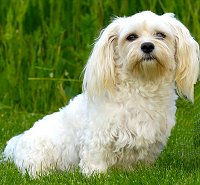
The Breed History
The Havanese dog is thought to have originated on the Isle of Malta
two thousand years ago. Tenerife dogs were the ancestors of the
Bichon family of dogs. Those dogs that were later exported to Cuba
were the seed stock for the modern Havanese breed. These dogs
are designated "National Dog of Cuba". Queen Victoria and Charles
Dickens owned Havanese dogs. The modern breed that is distributed
outside of Cuba derives from just eleven dogs that served as
foundation stock. The Havanese is considered a rare breed.
Breeding for Function
Companionship has been their primary purpose, though because of
their willingness to please and their intelligence, these dogs have
been applied to obedience work.
Physical Characteristics
Height at Withers: 9-10.5" (23-26.5 cm).
Weight: 8-11 lb (3.5-5 kg).
Coat: The silky double coat consists of soft short undercoat hairs
covered by a profusion of long (6-8" or 15-20 cm) soft hairs. The
outer coat hairs may be straight, curly or wavy. The waviest coats
cord naturally. Only foot hair trimming is allowed for showing.
Many colors are acceptable including black, blue, silver, gold,
cream, white, champagne and chocolate or these in bi- or tri-color
combinations. The hair over the eyes is very long, covering them
fully if not combed back.
Longevity: 12-15 years
Points of Conformation: The Havanese dog is similar to the Bichon
in build with long back, short legs and a profuse soft haircoat.
Their gait is characteristically springy and the plumed tail is curled
over the back. Eyes are almond shaped, dark brown, large and
have darkly pigmented palpebral rims. Ears have long feathers
and are medium in size and folded, with moderately pointed tips.
The skull is broad, slightly rounded, the stop is moderate, and the
muzzle tapers. The button nose is very large and black, though in
chocolates, the nose is self. The neck is moderate in length and
muscling, and the topline is level, though over the croup it rises
slightly to the high set tail. The tail may drop off the back when
resting. The thorax is of moderate depth, with well-sprung ribs.
Front and rear dewclaws may be removed, limbs are straight boned,
and the feet have well developed pads; toes are well arched up.
Recognized Behavior Issues and Traits
Reported breed characteristics include: Outgoing, active,
friendly, high trainability, and good with children. Heat tolerant,
high grooming needs, good alarm barker, needs close human
companionship, possesses high activity levels.
Normal Physiologic Variations
None Reported
Drug Sensitivities
None reported
Inherited Diseases
Hip Dysplasia: Polygenically inherited trait causing degenerative
hip joint disease and arthritis. OFA reports 9.9% affected.
Elbow Dysplasia: Polygenically inherited trait causing elbow
arthritis. OFA reports 6.4% affected.
Patella Luxation: Polygenically inherited laxity of patellar
ligaments, causing luxation, lameness, and later degenerative joint
disease. Treat surgically if causing clinical signs. OFA reports 2.8%
affected.
Disease Predispositions
Hypothyroidism: Inherited autoimmune thyroiditis. 22.6% positive
for thyroid autoantibodies based on testing at Michigan State
University. (Ave. for all breeds is 7.5%).
Osteochondrodysplasia (OCD): Developmental anomaly causing
premature growth plate closure and crooked or bowed front legs.
Segregation analysis suggests that this may be a syndrome that
could also include cataracts, hepatic abnormalities, and cardiac
abnormalities. Unknown mode of inheritance with a heritability of
0.36. Reported at a frequency of 20% in the 2004 Havanese Health
Survey.
Portosystemic Shunt (PSS, Liver Shunt): Abnormal blood vessels
connecting the systemic and portal blood flow. Can be intrahepatic
or extrahepatic. Hepatic microvascular dysplasia may also be
genetically related to this condition. Causes stunting, abnormal
behavior, possible seizures, and can cause ammonium urate urinary
calculi. Diagnose with paired fasted and feeding serum bile acid
and/or ammonium levels, and abdominal ultrasound. Treatment of
PSS includes partial ligation and/or medical and dietary control of
symptoms. Molecular genetic studies show a complex inheritance
with a single gene of major effect. Reported in 3.2% of Havanese
presented to veterinary teaching hospitals. Reported at a frequency
of 4% in the 2004 Havanese Health Survey.
Cataracts: Posterior suture and punctate cataracts predominate
in the breed. Unknown mode of inheritance. 11.57% of Havanese
presented to veterinary teaching hospitals had cataracts. Identified
in 2.61% of Havanese CERF examined by veterinary ophthalmologists
between 2000-2005. Reported at a frequency of 5% in the
2004 Havanese Health Survey. CERF does not recommend breeding
any Havanese with a cataract.
Persistent Pupillary Membranes: Strands of fetal remnant
connecting; iris to iris, cornea, lens, or involving sheets of tissue. The
later three forms can impair vision, and dogs affected with these
forms should not be bred. Identified in 7.34% of Havanese CERF
examined by veterinary ophthalmologists between 2000-2005.
Distichiasis: Abnormally placed eyelashes that irritate the cornea
and conjunctiva. Can cause secondary corneal ulceration. Identified
in 4.56% of Havanese CERF examined by veterinary ophthalmologists
between 2000-2005.
Vitreous Degeneration: A liquefaction of the vitreous gel which
may predispose to retinal detachment and/or glaucoma. Identified
in 1.69% of Havanese CERF examined by veterinary ophthalmologists
between 2000-2005.
Deafness: Congenital deafness can be unilateral of bilateral.
Diagnosed by BAER testing. Unknown mode of inheritance.
Reported at a frequency of 2% in the 2004 Havanese Health
Survey.
Oligodontia, progressive Retinal Atrophy, and Retinal Dysplasia
are reported.
Isolated Case Studies
None Reported
Genetic Tests
Tests of Genotype: Direct test for black/chocolate is available from
VetGen.
Tests of Phenotype: CHIC Certification: Required testing includes
hip radiographs, CERF eye examination, patella examination, and BAER
test for deafness. (See CHIC website; caninehealthinfo.org).
Recommended tests include blood ammonia and bile acids test for
PSS, elbow radiographs, thyroid profile including autoantibodies,
and cardiac evaluation.
Miscellaneous
- Breed name synonyms: Havana Silk Dog (historical), Spanish Silk
Dog (historical), Bichon Havanais.
- Registries: AKC, UKC, ANKC (Australian National Kennel Club),
NKC (National Kennel Club)
- AKC rank (year 2008): 36 (4,435 dogs registered)
- Internet resources: Havanese Club of America:
havanese.org
Havanese Fanciers of Canada: havanesefanciers.com
Havanese Club of Great Britain: havaneseclub.co.uk
Photo Gallery of Breed - Havanese - Dog Breed








 Animalia Life
Animalia Life